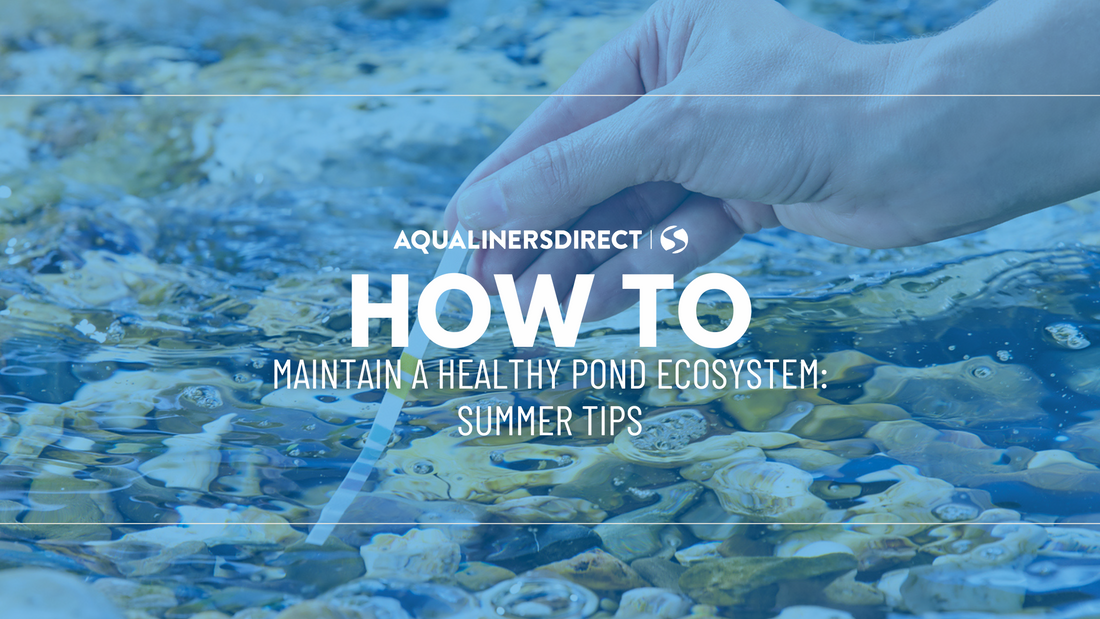How to keep fish, plants and water quality in harmony during warmer weather and heatwaves
With June underway and following news of the Met Office forecasting a higher likelihood of heatwaves and a hotter-than-average summer, now is the time to prepare your pond for the challenges ahead. High temperatures, intense sun and periods of drought can put a serious strain on your pond’s ecosystem. This can often lead to oxygen dips, algae blooms, and stressed fish. To help, here’s a few proactive steps you can take now to help keep your pond clear, healthy and thriving all summer long.
1. Keep Fish Populations in Check
Warm weather increases fish metabolism, which means more waste and a heavier load on your filtration system. Overstocked ponds can quickly become imbalanced in hot conditions, especially if oxygen levels drop, which is a common issue during heat waves or at night when plants and fish both consume oxygen.
Tip: Stick to the general rule of 25cm of fish per square metre of surface area. If your pond feels crowded or your water quality is suffering, it may be time to rehome some fish, upgrade your filtration.
2. Balance Aquatic Plant Life
Plants are your pond’s natural air conditioners. They provide shade, reduce algae by competing for nutrients, and release oxygen during the day. However, too many can have the opposite effect, especially overnight, when they consume oxygen.
Tip: Aim for 50–70% surface coverage with a balanced mix of floaters, oxygenators and marginals. Remove any decaying material promptly to prevent it from fouling the water, especially during hot spells when decomposition happens faster.
3. Boost Filtration and Aeration
In the summer heat, your pond’s biological load increases - more feeding, more waste, faster plant growth. Filtration and aeration become even more critical to keep oxygen levels stable, particularly during the night or in the early morning when oxygen is at its lowest.
Tip: Clean filters regularly (but gently to preserve beneficial bacteria), and consider adding an air pump, fountain or waterfall to improve circulation and surface oxygen exchange. These features also help to prevent the water from becoming stagnant during still, humid days.
4. Prevent Water Stagnation
Still water warms up quickly and can become a hotspot for algae, mosquitoes and foul odours. During a heatwave, stagnant zones are more likely to suffer from oxygen crashes.
Tip: Ensure consistent water movement throughout the pond, particularly in hidden corners or shallow areas. Adjust pump flow if needed or introduce additional circulation points to keep water fresh and oxygenated.
5. Watch Out for Water Loss
Evaporation can be rapid during a dry, hot spell, especially in shallow ponds. Topping up with untreated tap water can disrupt the ecosystem and cause chemical imbalances.
Tip: Monitor water levels weekly and top up gradually with dechlorinated water to avoid shocking fish or plants. In very hot periods, adding a floating shade (like lilies or even a pond sail) can help reduce evaporation and keep water temperatures more stable.
6. Keep an Eye on Water Quality
Clear water isn’t always clean water. With increased heat, organic matter breaks down faster, and spikes in ammonia, nitrites and pH can occur.
Tip: Test your pond every couple of weeks and after any heatwave. A partial water change (10–15%) can help reset the balance; however, always treat new water before adding it.
Final Thought
A healthy pond is a balanced one, and summer is the season when that balance is most easily tipped. By keeping fish numbers sensible, managing plant growth, maintaining strong filtration, and staying alert to signs of stagnation or stress, you’ll give your pond the best chance of thriving through any heatwave or dry spell that comes your way.
Need help choosing the right equipment or planting strategy for summer? Contact us or explore our full range of pond products online. We’re always happy to help.



